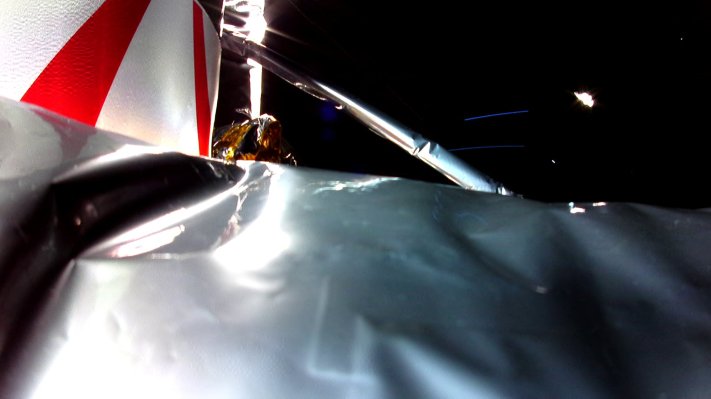Astrobotic’s lunar lander will be reentering Earth’s atmosphere over a remote part of the South Pacific Ocean tomorrow afternoon, bringing to a close the failed moon landing mission.
The Peregrine lunar lander is expected to reenter around 4PM EST over an unpopulated stretch of ocean near Fiji, according to coordinates Astrobotic posted in a Wednesday update. The spacecraft will not survive reentry. The company said it had been working with NASA to monitor its re-entry path and ensure Peregrine’s reentry is both safe and predicable.
Pittsburgh-based Astrobotic has been providing frequent updates on the Peregrine lunar lander since it launched on United Launch Alliance’s Vulcan Centaur on January 8. While the launch was executed with no issues, Astrobotic reported an anomaly with the spacecraft mere hours after it was deployed in orbit.
The source of the anomaly was an ongoing propellant leak, which were preventing Peregrine from pointing its solar arrays at the sun. While Astrobotic engineers were successful in reorienting the arrays, the company later said that it suspected the root cause of the issue was a critical propellant leak in the propulsion system. That likely came down to a valve in the pressurant system that failed to close.
The company confirmed that there was “no chance of a soft landing on the moon” due to the leak the following day.
Astrobotic has extended the lifespan of the mission far longer than it originally thought possible: the same day that the company confirmed a moon landing was off the table, it estimated that the spacecraft had only 40 hours of propellant left. But by the time it reenters the atmosphere tomorrow, Peregrine will have operated in space for over ten days.
Due to the propellant leak, Astrobotic said it had devised a two-step process to maneuver the spacecraft to the projected trajectory for reentry. In the first, the company fired the five main engines in very short pulses, because a longer burn was taken off the table due to the leak. Peregrine executed 23 small main engine burns overall.
The company also adjusted the spacecraft’s “attitude,” or orientation, so that the leaking propellant shifted Peregrine toward the South Pacific Ocean.
“The procedures the team executed were to minimize the risk of debris reaching land,” Astrobotic said in a Wednesday statement. “Astrobotic continues to work closely with NASA and other relevant government authorities to keep everyone informed and to solicit feedback as appropriate.”
Despite the company not achieving the mission objective, Astrobotic said it was able to receive valuable data from many of the payloads on board. A portion of those payloads were scientific instruments and other research from NASA, which backed the mission in a $79.5 million contract awarded to Astrobotic in 2019.
